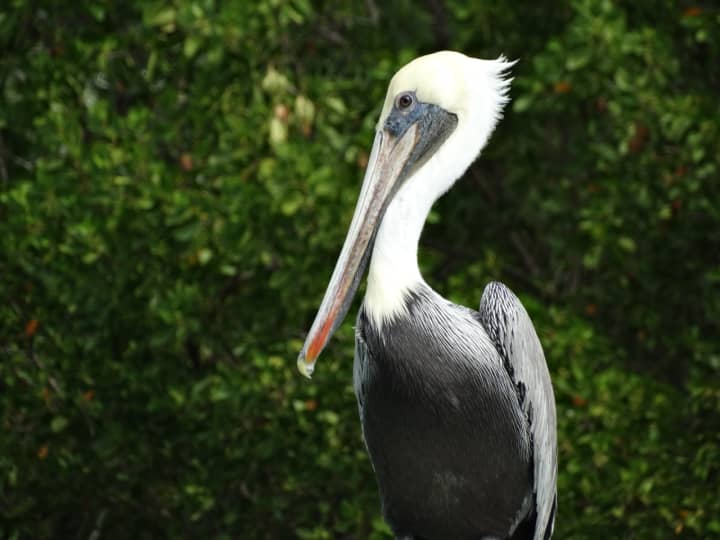Easily distinguished from our more typical marine species, pelicans often fly in imposing flocks up and down the shoreline, patrolling the sea below for their primary food source -- fish. Their large, ungainly bills are specifically designed to hold fish, which are caught as the birds plunge spectacularly from great heights.
Adult pelicans sport a long white neck with varying shades of brown and yellow, while juveniles are nearly entirely brown. Many visitors to the shore are often surprised to find this familiar Floridian bird perfectly at home in our region.
To understand the recent arrival of the pelicans, remember that only 50 years ago the species was on the verge of elimination. Poaching and DDT severely reduced the numbers of pelicans on the Eastern Seaboard, and they remained on the endangered species list until 2009. However, during their time on the list, the brown pelican population exploded in the Southeast, with breeding colonies being established farther and farther north.Today, the northernmost breeding colony is in Maryland’s Chesapeake Bay, which was established less than 30 years ago. The northward march of the species has consequently prompted small flocks of pelicans to range all the way up to New Jersey and the south shore of Long Island.
Now, it's not uncommon to spot individuals on a typical summer day plying the coastal areas in search of fish. While there has been no recent news of further range expansion, the gradual warming of our coastal waters certainly suggests the pelicans may become an even more common occurrence in the near future.
William Haffey is a seminarian for the Diocese of Bridgeport and has a background in avian ecology. He has birded extensively in the United States and Latin America.
Click here to follow Daily Voice Harrison and receive free news updates.



